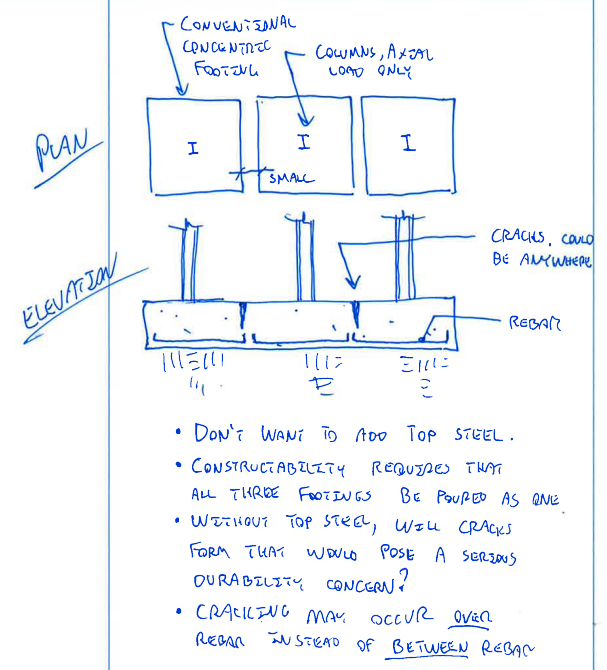I've got a series of concentric pad footings that have been designed as separate entities but will almost surely be constructed as one, monolithic footing (see sketch below). The question has arisen as to whether or not these footings should have top steel if constructed this way. The concern is that, under load, the large monolithic footing may develop large cracks at random topside locations between columns, allowing water to reach the reinforcing steel at the bottom of the footing and initiate corrosion.
How serious of a concern is this? Is top steel necessary in this situation?

I like to debate structural engineering theory -- a lot. If I challenge you on something, know that I'm doing so because I respect your opinion enough to either change it or adopt it.
How serious of a concern is this? Is top steel necessary in this situation?

I like to debate structural engineering theory -- a lot. If I challenge you on something, know that I'm doing so because I respect your opinion enough to either change it or adopt it.
